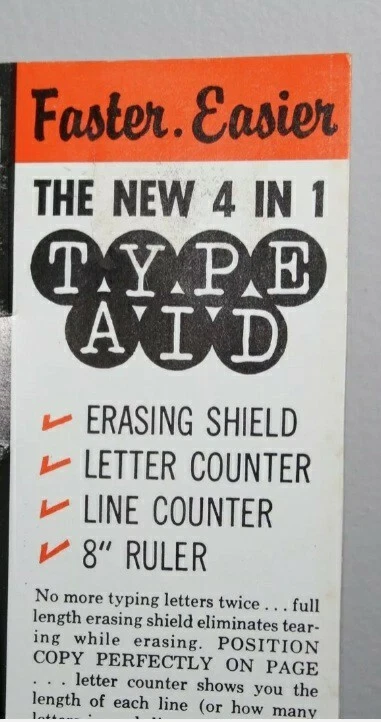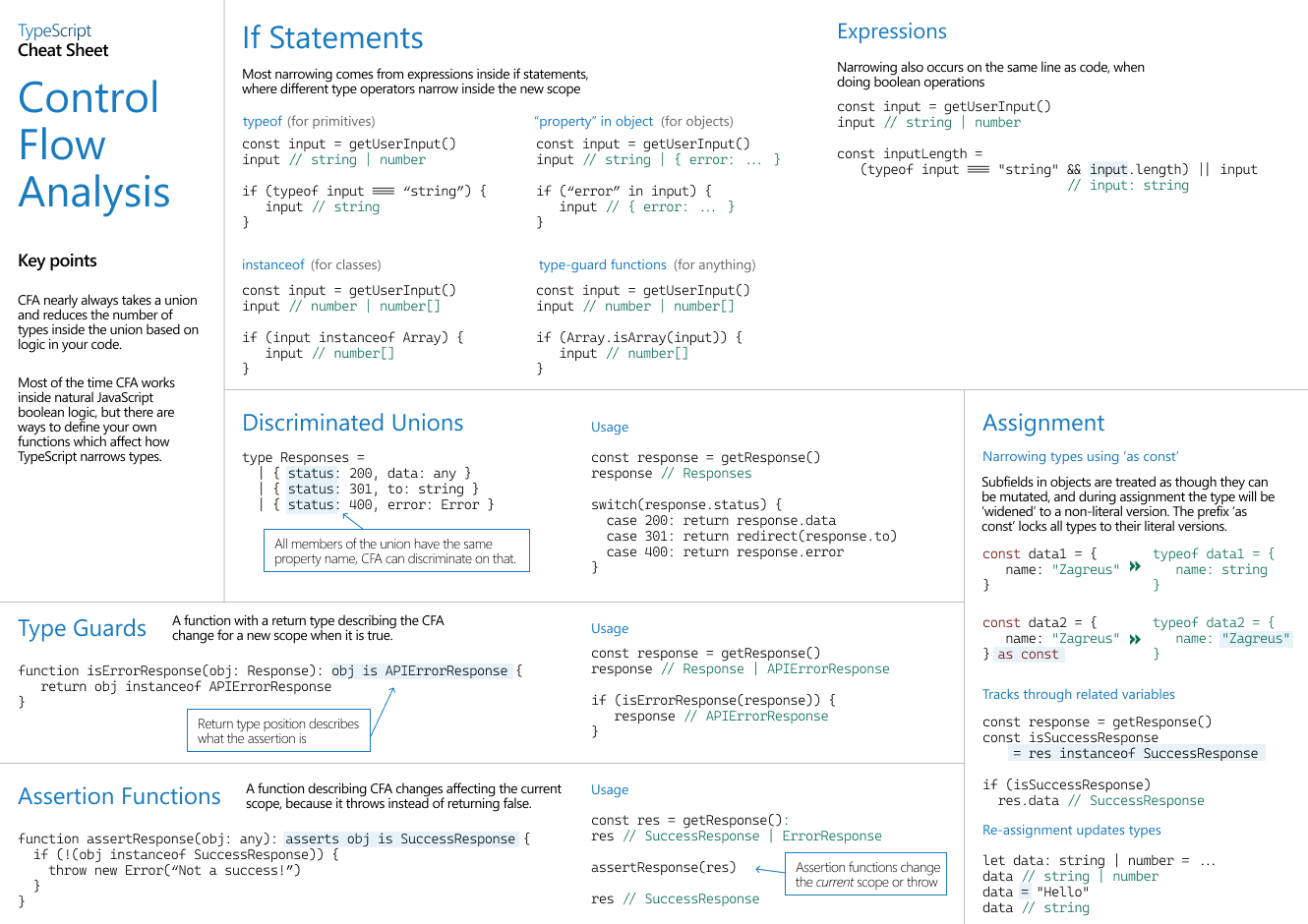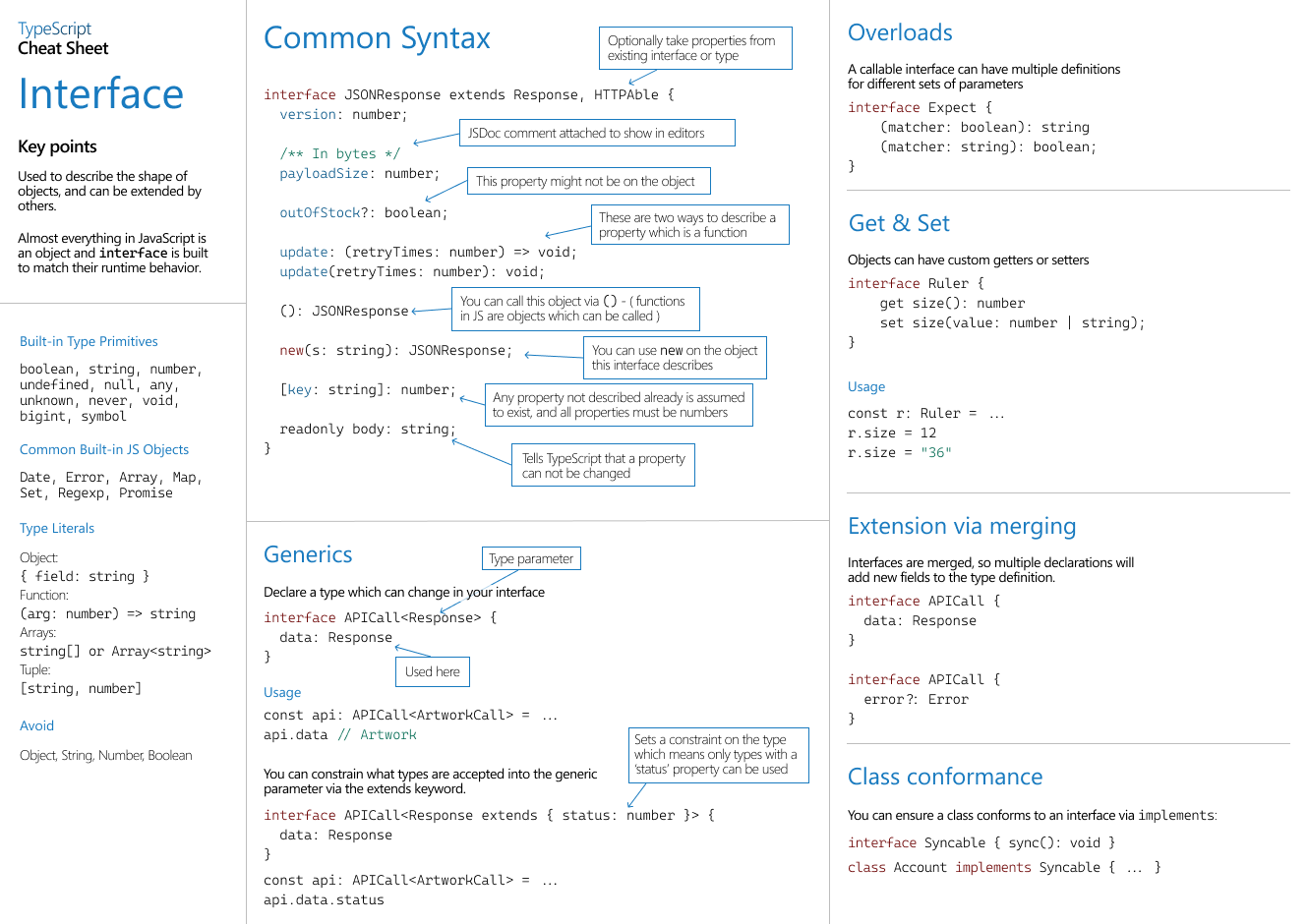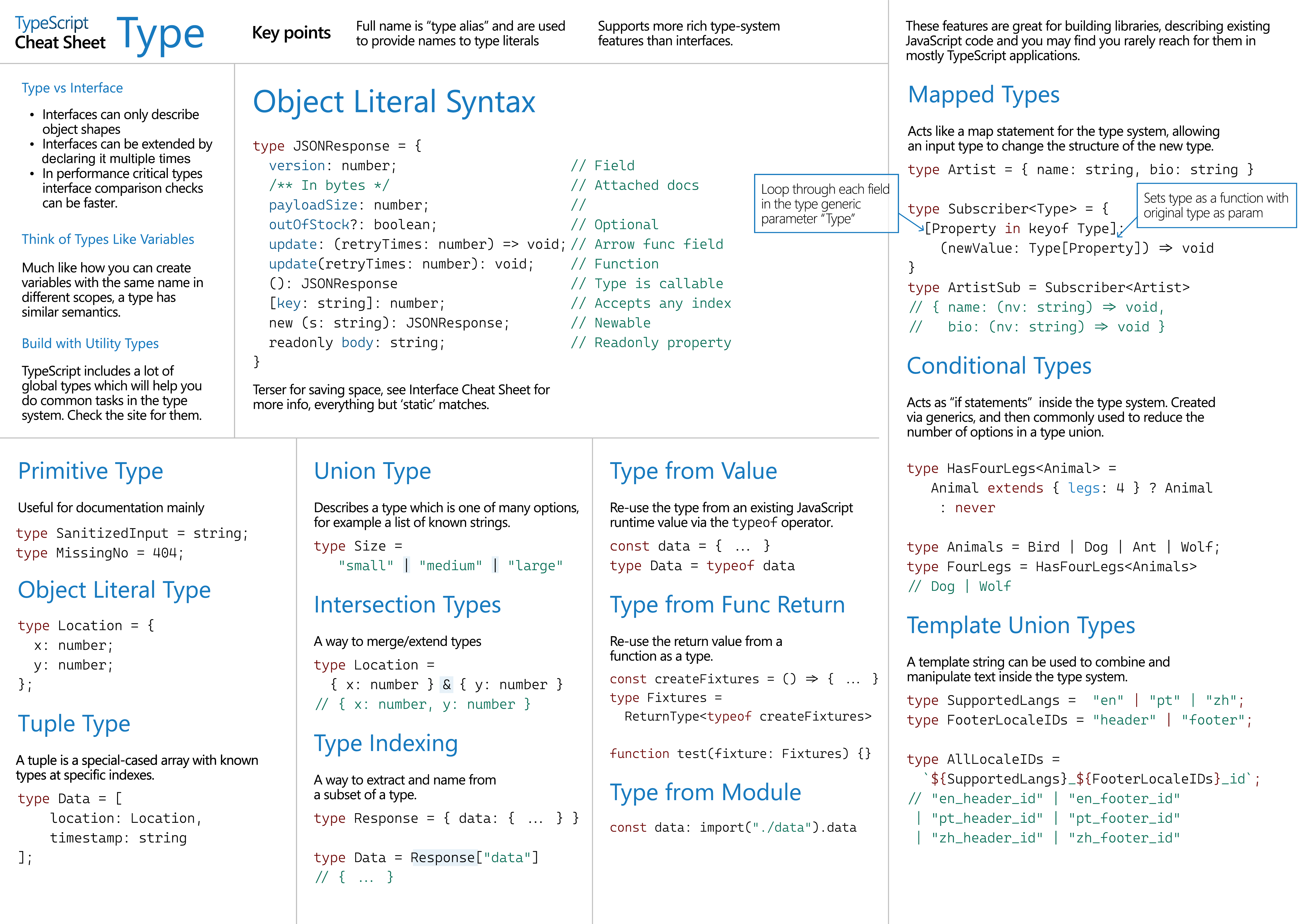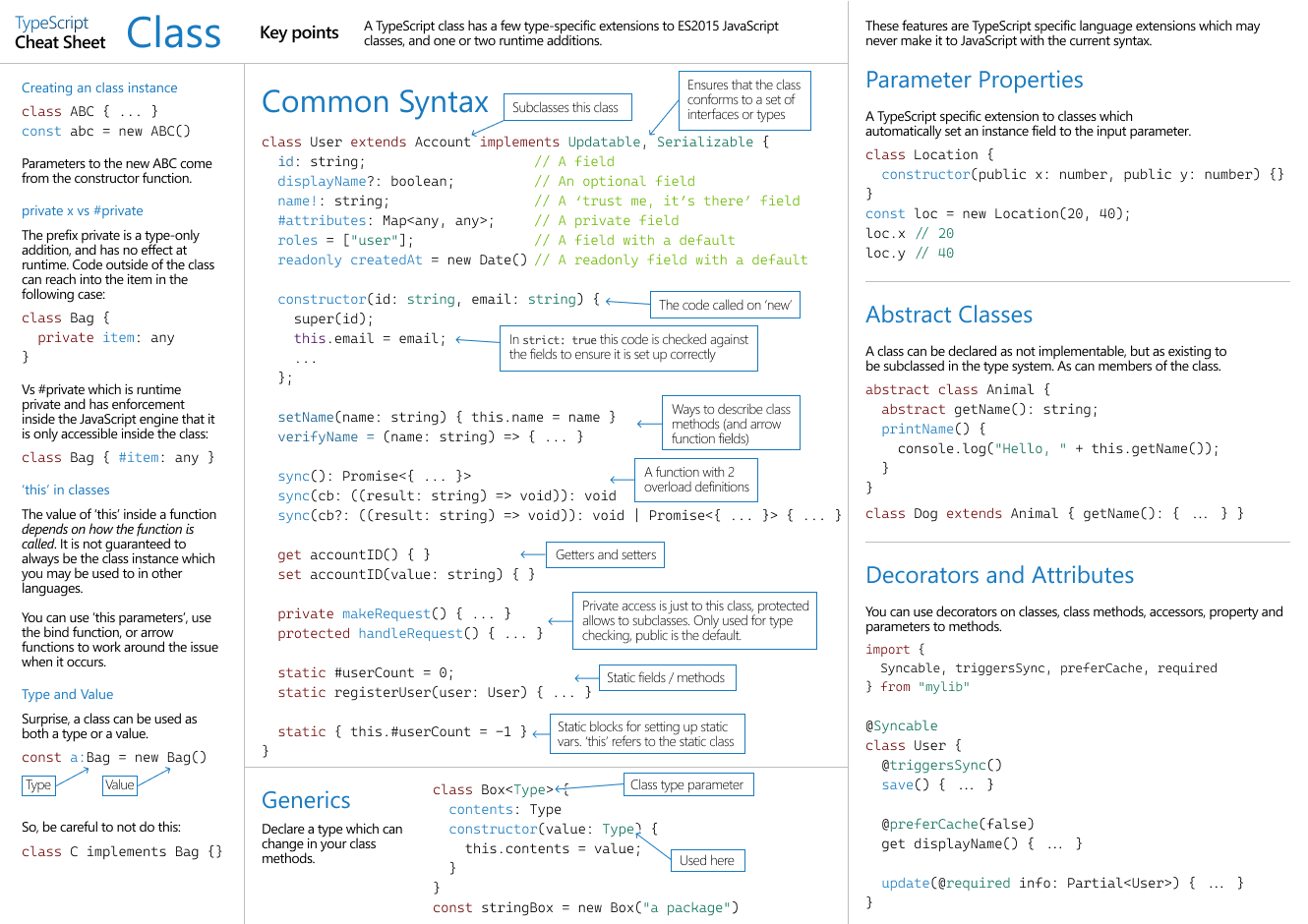- Dec 2025
-
www.hanttula.com www.hanttula.com
- Nov 2025
-
-
reply to u/SlumberCrow at https://reddit.com/r/typewriters/comments/1orwxqq/type_writer_leaving_small_divets_in_paper_when/
A new platen will certainly help, but it's also a question of having a proper ring and cylinder adjustment across the length of your platen and segment. Often letters that punch through tend to be the . , and o which are at the extreme end of the segment. Some machines have adjustment screws at either end of the carriage and the adjustment should be checked at not only the center of the platen but both ends. If you don't have an experienced mechanic who knows how to do all of this properly you can easily get issues which will most often show up at the far ends of the the segment/platen.
Beyond a proper adjustment, it's also the case that the surface area of the . and , are smaller than other characters and so they tend to get more force even when actuated by the weaker fingers on the right hand when touch typing. Some older manuals and training films will suggest putting less pressure on these keys when typing. This is likely even more important for those who hunt-and-peck and are likely using the full force of their index fingers.
Unless your ribbon is obviously dry or marginal, replacing your ribbon isn't likely to help much. Slugs are made out of hardened steel and you'd have to do something incredibly drastic to damage the slugs, so don't sweat that too much. Backing sheet will help as a stop-gap particularly on machines with older/hardened platens, but there's only so much help that will do without a good platen and a properly adjusted machine.
-
-
www.youtube.com www.youtube.com
-
Hunting for Typewriter Accessories - YouTube<br /> by [[Just My Typewriter]] - Sarah Everett accessed on 2025-11-01T22:07:29
Estate sales often have interesting office supplies and paper in desks.
2:45 typewriter ribbon tins; made out of tin, cardboard, paper<br /> sometimes tins come with spools or spare parts
5:35 Typewriter ribbon display kits and pieces
6:58 Typewriter case keys<br /> She's collected images of case keys to know what to buy.<br /> She's got a buying guide on her website with photos.
10:04 Typewriter key tops
13:20 typewriter brushes and cleaning products, blower brushes, typeslug cleaners,
15:25 Typing books, user manuals, Typatune,
16:29 Typewriter toys; often in the $25+ range
17:23 Typewriter advertisements<br /> Sarah often purchases these online and uses them in her videos.<br /> Underwood fingernail polish advertisements
19:15 Typewriter playing cards (advertisement)
20:13 Typewriter related postcards
20:45 Typewriter books:<br /> - references; lots online; - Anthony Casillo - Typewriters (coffee books) - Michael Adler: Antique Typewriters - Paul Robert and Peter Weil - Iron Whim by Darren Werschler-Henry - non-fiction, history, - books written by other collectors<br /> - Tom Hanks' Uncommon Type<br /> - Olivetti by Allie Millington
Crescent City Books in New Orleans - has typewriters as decoration
25:03 Typewriter community collectors/creators<br /> - Lucas Dul - The Williams Typewriter (Loose Dog Press) - Loose Dog Press series<br /> - Woz Flint - The Distraction-Free First Draft<br /> - Richard Polt - The Typewriter Revolution (after thought)
28:43: Typewriter Magazines - ETCetera - Novellum Magazine (Writing related)
Tags
- vintage paper
- typewriter accessories
- watch
- typewriter brushes
- typing books
- typewriter ribbon tins
- typewriter ephemera
- Typeatune
- typewriter collecting
- typewriter manuals
- typewriter toys
- cleaning tools
- typewriter creator community
- typewriter cases and keys
- typewriter erasers
- stationery
Annotators
URL
-
- Oct 2025
-
www.showbiz411.com www.showbiz411.com
-
UPDATED Watch Woody Allen's Interview with Bill Maher: "Sunset Boulevard" (the Movie) is "Fun Junk," "Streetcar" is "Perfect" - Showbiz411<br /> by [[Roger Friedman]]<br /> accessed on 2025-10-22T10:20:51
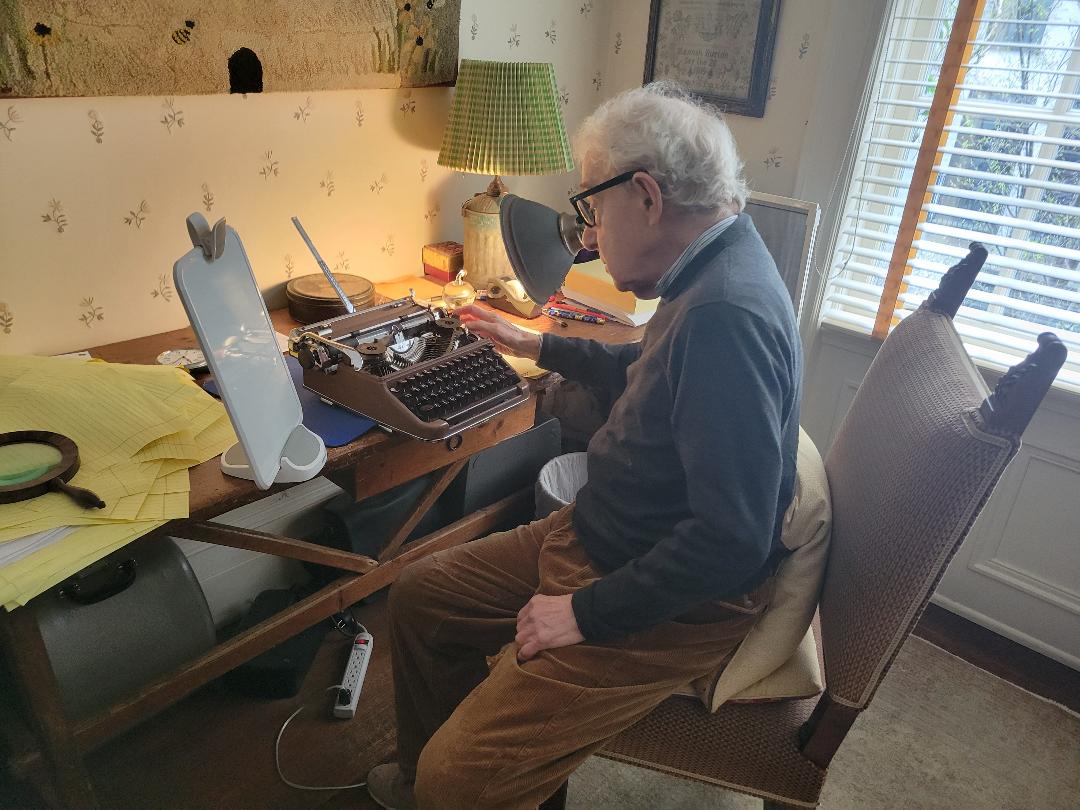
-
-
www.reddit.com www.reddit.com
-
https://www.reddit.com/r/typewriters/comments/1o9bpgu/isnt_it_woddys_long_lost_ribbon_cover/

Woody Allen reported in a documentary that he'd lost his cover for his Olympia SM3, but it appears to be on his desk in this undated photo.
-
-
www.reddit.com www.reddit.com
-
Some of the letters are consistently struggling to print properly, like a, w, q, etc. I've cleaned the typebar section multiple times which seemed to help initially but it continues to be an issue, I'm not sure what could cause only certain letters to print incorrectly.
reply to u/peachaphrodite at https://old.reddit.com/r/typewriters/comments/1nwu77s/sears_scholar_specific_letters_are_faint/
Issue with light imprints on a, w, q, etc.
Are you a touch typist or a two finger hunt-and-peck typist?
Solely based on the letters, I'll guess there's nothing wrong with the machine and that you're a newer touch typist whose two weakest fingers on your non-dominant hand just need some exercise to get a better imprint. I'd guess the same happens to your z and x as well, but you use them less. Practice typing about your "qwaze axes and saws" a few times a day for a week to improve your finger strength and technique.
If you're a hunt-and-peck person, then your typebars may need some gentle forming/fine adjustment using some specialist tools to give better imprints. Those letters on the ends of the segment more often go out of alignment than others. If this is the case, try: https://site.xavier.edu/polt/typewriters/tw-repair.html
-
- Sep 2025
-
www.reddit.com www.reddit.com
-
RE: poor type quality on the "!" via u/TheGuyAtThePlace265 at https://reddit.com/r/typewriters/comments/1no1whe/poor_definition_on/
Lots of things can cause this in rough order, check:
Clean the slugs
Ribbon can have an effect. Silk is generally crisper than nylon which is crisper than cotton.
The paper can have an effect depending on the thickness and general grain.
Typing technique can play a part. Often you'll see issues including ghosting and other problems, particularly if you bottom out a key while typing.
Are you using a backing sheet?
Is your platen rock hard or has it been re-covered?
Is your ring and cylinder adjustment properly done?
The most frequently abused slugs are often the ones at the the ends of the segment and 1/! definitely qualifies. Sometimes a small bit of forming can clear things up.
-
- Aug 2025
-
typewriterdatabase.com typewriterdatabase.com
-
It came in a nice condition, black leatherette-covered hard wooden case, with the original brush, an owner's manual in French, a typing instruction booklet in English and a cardboard "instant typing chart" made to fit between the 3rd and 4th rows of keys in order to help in learning the touch-typing method.
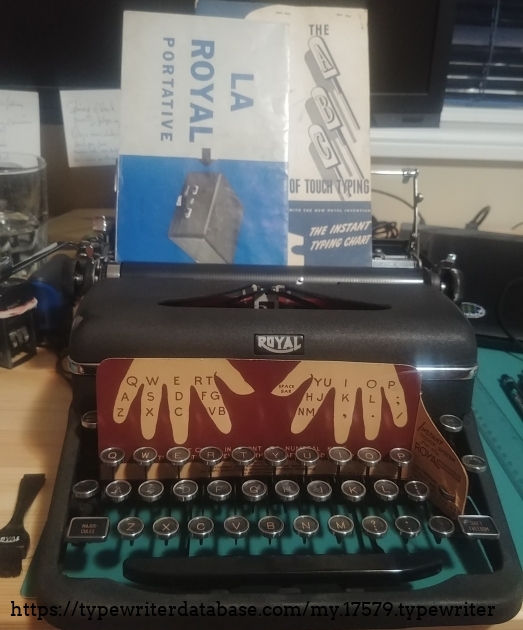
-
-
www.reddit.com www.reddit.com
-
Earlier this morning, I said to someone who was worried about typing topless:
You'll be joining a log line of typists, including Wood Allen, who liked to type "naked" or "topless".
I've even seen a few typewriter shops selling typewriters without the external shells. I'd a lot harder to keep them dust free, but it can certainly be fun. It's an fun, easy, and fascinating way to sell off a machine that's missing some screws or has dented/damaged panels.
reply to u/stiff_peach at https://reddit.com/r/typewriters/comments/1mf2seo/typing_without_panels/
-
- Jul 2025
-
www.youtube.com www.youtube.com
-
JVC's Typing Scale<br /> by [[Joe Van Cleave]]
-
-
www.youtube.com www.youtube.com
-
https://youtu.be/qrlt6VyC8D0?si=yHjByRVLa2BMYt-4&t=485
Description of typebars sticking at the typing point and needing forming to repair them.
-
- Jun 2025
-
www.reddit.com www.reddit.com
-
www.youtube.com www.youtube.com
-
https://www.youtube.com/watch?v=4rYHNg3pM34
Second edition of this video...
The Secretary: Transcribing (Second Edition) Coronet Instructional Films, a division of Esquire, Inc., 1966<br /> James R. Meehan, Ed.D, Dean of Administration Hunter College of the City University of New York
-
-
www.youtube.com www.youtube.com
-
Typing Skills: Fields of Typing. 16 mm, Instructional film. Periscope Film, 1972. https://www.youtube.com/watch?v=LvF0atKsggY.
Typing Skills: Fields of Typing <br /> Coronet Instructional Films, a division of Esquire, Inc., 1972<br /> Lawrence W. Erickson, Ed.D. Professor of Education, University of California, Los Angeles<br /> Production: Coronet Films and Creative Establishment, Inc.<br /> Director and Writer: Don B. Klugman<br /> Photography Robert Flaxman<br /> Editing: Barbara Kaplan
Periscope Film XD72104 archived at https://stock.periscopefilm.com/xd72104-typing-skills-fields-of-typing-1972-typewriter-based-careers-educational-film/
Alternate version at https://www.youtube.com/watch?v=lMmsE6GMIR8
Warm ups of fingers
Rules of good typing - concentrate on the copy
Typewriters in the piece: <br /> - Olivett editor 5<br /> - Others...
- copy typing - types material already written or typed
- setting margins
- centering letters on page
- formatting and spacing
- double spacing with wide margins
- editor's marks
Backspace from center method for setting tab stops
Uses for typewriters:<br /> - check writing - billing - chain feeding - financial records and reports - filling in forms - carbon copies
index and file cards - inserted into a pleated page which may have lines.
-
- Apr 2025
-
www.amazon.com www.amazon.com
-
https://www.amazon.com/dp/B01C3DFX8U/
Stay-in-Place Machine Mat - 11" x 14" - Calms Vibration and Dampens Noise. Great for Sergers. Made in USA. for $13.99
-
-
www.recordholders.org www.recordholders.org
-
https://www.recordholders.org/en/records/typing.html
19,890 pages/1000 ribbons is approximately 19 pages per ribbon.
-
- Mar 2025
-
www.markcoggins.com www.markcoggins.com
-
Sybil Davis—who put the machine up for auction after receiving it from her mother, Jean Vounder-Davis—shared this with me in e-mail correspondence after the auction: He was not a “touch typist.” He preferred the “hunt and peck” system using only his two index fingers I … observed him using it on a daily basis.
Raymond Chandler was not a touch typist.
-
-
www.lascrucesbulletin.com www.lascrucesbulletin.com
-
Local writers host ‘typewriter revivals’ by [[Algernon D'Ammassa Las Cruces Bulletin]]
-
- Feb 2025
-
www.youtube.com www.youtube.com
-
Correcting Bad Typing Habits with the Smith Corona Electric Typewriter 63024 by [[PeriscopeFilm]]
Motion should happen only at the level of the fingers and not at the wrist or even the arms. Type only with your fingers and not your wrists or arms.
Allow the carriage to glide to complete the carriage return rather than wasting addition time and energy on pushing it all the way. Let the momentum do the work.
Use the paper release when removing letters to reduce wear on your rollers and prevent ripping of the paper.
Drop the paper into the top of the platen and against the paper guide to improve alignment can save time.
Setting the right hand margin will help save huge amounts of time from the transcriptionist looking back and forth to get proper margins otherwise.
Using correct typing for numerals will speed up typing numbers as well.
For the top tabulator, use your index fingers alternately instead of hitting it with your entire hand.
Hugging the keys with your fingers allows you to type faster, much like a drummer keeps the sticks closer to the drumhead when drumming quickly.
-
-
www.youtube.com www.youtube.com
-
Typewriter Strike Out Corrections by [[Joe Van Cleave]]
-
- Dec 2024
-
-
https://www.ebay.com/itm/163994180379
Similar to similar ones by Solari.

-
-
www.ebay.com www.ebay.com
-
www.youtube.com www.youtube.com
-
Typewriter Video Series - Episode 59: Tray Table Typing Hacks by [[Joe Van Cleave]]
-
-
-
"Any skill [typing] can be a valuable asset to a man."—Ed Asner, 1975, The Army Reports #51, Periscope Film #27844 (at 11:16)
Tags
Annotators
URL
-
-
www.youtube.com www.youtube.com
-
ELEMENTARY TYPING <br /> via Periscope Film #15494
Elementary Typing. 16 mm, Instructional film. Periscope Film, #15494, 1971. https://www.youtube.com/watch?v=7cdyoPu_ASw.<br /> running time: 00:12:06
Produced by Moreland-Latchford Productions, Ltd this informational film from 1971 titled “Elementary Typing” teaches the basics of becoming a good typist. The film features a manual Typemaster, a trade name used by Underwood as far back as the 1930s. This version of the machine featured both red and black ribbons. An electric version is seen at 9:00.
The film is broken down into different sections that focus on different elements of typing from the rhythmic beat of typing to optimal hand positioning as well as how to set up a typewriter. “Elementary Typing” is part of a larger film series related to the art of typing with other titles including “Posture and the Keyboard,” “First Step Typing,” “Machine Techniques,” and “Remedial Typing.” Advisors for the creation of the film include James Treliving Commercial Coordinator North York Board of Education, J.T. Albani East York Board of Education, Sheila Wright Etobicoke Board of Education, and Ronald Thelander Director of Audio-Visual Aids Metropolitan Separate School Board, Toronto. In addition, the film was directed by Rod Maxwell and written by Robert Browning and featured Alex Veltman as the cameraman, Carl Connell as editor, Joe Hayward as production head, and James McCormick as executive producer.
Pink illustrated typewriter on navy blue background (0:09). Outline of topics covered (0:17). A: early rhythm and reading – metronome and hands typing in the background (0:22). Aerial view of hands typing on an 197X Underwood Typemaster model typewriter (0:42). Camera pans words typed on a page (1:27). Close-up of letters being printed onto a page (1:36). Woman sitting at desk typing quickly (2:24). B: Paper Insertion – close-up of typewriter and hand setting the paper guide at the correct place on the paper table (2:35). Explanation of correct form and technique for holding and inserting paper (2:58-4:23). Explanation of paper removal (4:26). Badminton player returning various shots (4:41). Close-up of hands on the typewriter emphasizing the art of positioning (5:07). C: The Shift – explanation of the shift key (5:15-6:30). D: The Carriage Return – close-up of the device (6:32). The woman types and uses the carriage return (6:46-9:00). The Electric Typewriter – comparison between 197X Underwood Type Master manual model and Underwood 765 Type Master electric model typewriter (9:04). Difference between typing strategies (10:03). Benefits of using an electric machine (10:20). Closing credits (11:35).
-
-
www.youtube.com www.youtube.com
-
World's fastest typist in typewriter - Stella Pajunas
140 wpm
Typing with a handkerchief covering the keyboard such that the handkerchief doesn't move.
-
-
www.youtube.com www.youtube.com
-
The Secretary: Transcribing. 16 mm, Instructional film. Coronet Instructional Films, 1955. https://www.youtube.com/watch?v=L7wAJki9ec4.
-
-
www.youtube.com www.youtube.com
-
Ron "Typewriter" Mingo, World's Fastest Typist
Typing letter for letter, word for word, or phrase for phrase.
Using music while typing as motivation.
-
- Nov 2024
-
www.reddit.com www.reddit.com
-
reply to u/Pawps4895 at https://old.reddit.com/r/typewriters/comments/1h1dcil/help_ink_ribbon_not_moving/
That ghosting effect you're seeing may be down to your typing technique. Computer keyboard typing technique is different than typewriter technique. If you're pressing hard and/or bottoming the keys out, you may not be getting your fingers out of the way and causing the key to double strike while you're lifting your finger up.
Instead, type as if they keys are hot lava. Strike and release them as quickly as possible and that ghosting should clear up. For more on technique, try: https://hypothes.is/users/chrisaldrich?q=tag%3A%22typing+technique%22
If that isn't the issue, is that ghosting happening on all the keys or just a few? Cleaning things out certainly couldn't hurt: https://boffosocko.com/2024/08/09/on-colloquial-advice-for-degreasing-cleaning-and-oiling-manual-typewriters/
-
- Oct 2024
-
www.youtube.com www.youtube.com
-
Basic Typing: Machine Operation. 16 mm. Vol. MN-1512b, 1943. https://www.youtube.com/watch?v=b-REJEArnjE.
Type pacer timestamp 4:12
"Your head is the most important part of your typing." - Lenore Fenton
"Your typewriter does exactly what you make it do, but it does no more" - Lenore Fenton <br /> This is very similar to quotes about computer programs at the end of the 20th century too.
The touch characteristics for the manual, the noiseless, and the electric are all slightly different.
-
-
www.youtube.com www.youtube.com
-
1962 Vintage IBM Typewriter Training Film IBM Selectric Proper Typing Procedures, w/ Bud McDole by [[Computer History Archives Project]]
Right at the Typewriter. 16 mm. San Francisco, CA: KQED, 1962. https://www.youtube.com/watch?v=sPfHAW_OfGo.
On manual typewriters one "snaps" the keys while on an electric keyboard one "taps" the keys for maximum speed and accuracy.
Overview of functionality of an IBM typewriter.
To add longevity to one's carbon papers they should be rotated both top to bottom and front to back within one's packs.
Use plastic type cleaner, meant for cleaning type slugs, to clean the excess ink from a typewriter. Form it into a point and press it to the letter to erase several times. Then erase with eraser shield and eraser.
To type to the very bottom of the page, particularly with a carbon pack, to prevent slippage at the bottom, insert a "trailer sheet" about halfway down the first page. Insert it at the back of the pack just behind the original and between the first carbon sheet.
For typing small sheets of paper (index cards) fold a pleat into a regular sheet of paper and use the lip to hold the smaller sheet you're typing on.
To more quickly type envelopes, do the first then reverse the platen so that only about an inch of the top of the envelope is visible. Then insert the next envelope behind the first and continue reversing the platen. This will allow the finished envelopes to stack at the paper table and speed the threading and typing of envelopes in rapid succession.
Use of the divots on the typing guide for making horizontal or vertical lines while moving the carriage or rotating the platen respectively.
How to change the typeball and the ribbon cartridge on the IBM selectric.
-
-
www.youtube.com www.youtube.com
-
Basic Typing: Methods, 1943. https://www.youtube.com/watch?v=ztyzGit1dTI.
Tags
Annotators
URL
-
-
www.youtube.com www.youtube.com
-
Typing Technique and Typewriter Design by [[Will Davis]] and [[Dave Davis]]
As early as 1932 Royal salesmen would use poor typing technique on purpose to cause skipping and piling and then use proper technique on their own machine to show how much better their typewriters were compared to the others.
Some repair and service manuals had sections about tuning a typewriter to the level of technique of the user. These may have included 5-6 specific adjustments for allowance to a particular user's technique, as an example indicated in this video.
"pounded out" - used by a heavy handed typist and now skipping (mentioned possibly in an Ames Repair Manual)
In the mid-century, the service life of a standard machine was 1-3 years of continual (heavy) use. After this it would have been remanufactured or swapped out.
-
- Aug 2024
-
www.youtube.com www.youtube.com
-
Slow Motion Typing Analysis by [[Joe Van Cleave]]
Royal Quiet De Luxe - releasing keys quickly enough in terms of technique can cause skipping.
-
-
www.youtube.com www.youtube.com
-
Advanced Typing - Shortcuts (1943)
Advanced Typing: Shortcuts. 16 mm. Vol. MN-1512c. United States Navy Training Film, 1943. https://www.youtube.com/watch?v=JUJfCfqgsX0.
Correct typing posture: fingers curved<br /> arms sloping up<br /> light fast strokes<br /> steady rhythm
fast continuous motion of return lever<br /> using backing sheet (aka temping sheet ??)
Shortcuts:<br /> mise en place for office supplies (she doesn't use this phrasing though) - greater efficiency - cuts down on searching
tabulators can be helpful. There are two types:<br /> - automatic - handset
Use tabs for paragraphs, dating letters, columns of numbers, and letter closings.
To clear all tab stops, put carriage to left, hold tab clear key and move the carriage across. (Usually applies to Royal, Remington, Underwood, and Electromatic).
On LC Smith and Woodstock machines sometimes have a tab clear lever on the back.
Decimal tabulator keys help to align a variety of numbers around a decimal point.
Always have a few tabs set to prevent a flying carriage which can be hard on the machine.
When using carbon sheets which are slightly longer than the paper size, cut off a small triangle at the top left hand side. This makes it easier for one to separate the carbons from the copies by holding the top left with one hand and pulling the carbons out from the bottom of the stack.
To align multiple sheets of paper for carbon copies, use a folded sheet at the top to taco the pages into the machine. Remove the folded sheet once the carbon pack is rolled forward.
Paper bail rollers should be set to split the pages into thirds (for two rollers).
Remington noiseless machines have a pressure indicator on the front of the machine (usually above the keyboard) which can be used when using thick carbon packs that may cause the ribbon guide to stick or bind.
Only erase when the carriage is fully left or right to prevent eraser crumbs from falling into the machine.
Use a soft eraser on carbon copies. Use and insert slips of paper behind the carbons and allowing them to stick out the sides, erasing from back sheet to front so as not to allow the eraser to mark your carbon copies. For the front sheet, use a shield and ink eraser and erase with a horizontal motion. After erasing, easily pull out the inserted sheets.
When typing a correction, tap the key lightly two or three times rather than hard once.
When in a rush and it's necessary to add a word (on double spacing), underline the last letter of the prior word and type a slash (/). Then move the typing line up and type the insertion above the prior line. This creates an "arrow" of sorts for the inserted word.
Details for inserting extra letters in misspelled words using half-spacing machines. (Underwoods and Electromatics don't have this function.)
Light pencil marks at the bottom of the sheet can help to indicate the coming bottom of the sheet.
Putting up the card holders (fingers) on Underwoods and Royals. They help to hold the card and improve print quality and reduce noise.
Card holders can cause markings on carbon packs if they're not lowered.
Trick for quickly writing postcards in succession: Disengage the ratchet using the platen spring release (or variable platen switch) Type the address on the front of the card. When done give the platen a quick practiced spin. The postcard with "jump" up and stop at the paper table and be in position for rolling in the opposite direction to write the message on the back of the card! When done a faster spin of the platen will shoot the card over the back of the typewriter where it can land in a box to collect all the postcards which were written in such a manner. <br /> timestamp 23:22
Time saving methods for addressing envelopes:
-
Front seat principle. Insert the envelope in the usual way and type out the address. When done, turn the envelope down through the machine with the right hand. With the left hand, place the next envelope between the top of the first envelope and the front of the platen. Feed the first envelope back through the machine (in reverse) and the second will be rolled in to place for typing. Continue in this fashion until finished. All the finished envelopes will stack up in the back at the paper table.
-
Chain feeding. The first envelope is inserted and rolled partway into the machine. A second envelope is inserted between the platen and the second envelope (behind the platen). Turn the first envelope to the writing line and type the address. Take out the first envelope and insert the next the same way as before.
-
Uses paper bail. Do the first envelope in the usual way. Spin it out of the machine up and behind the paper bail into a box behind the typewriter.
For quickly doing labels or small cards:<br /> Create a small zig-zag fold into a piece of paper to create a pocket slot which can be scotch taped on either side. This template paper can then be inserted so that the pocket is visible above the writing line, but the paper below it is still in the platen. The label or card can be placed into the pocket and the platen reversed to feed the label or card in backwards to the desired typing line. Using a v-groove or hole in the typing line can create a pencil line to serve as a guide for inserting many labels at the same place so that the typing lines up between labels.
Some offices had special platens for holding cards like this.
Pockets like this can also be used to hold the page to add additional lines at the bottom of pages. Deeper pockets may need to be used for doing this with carbon packs whose carbons are longer than the pages.
Alternately one can do something similar by creating a inverted u-shaped set of slits into an index card. to hold such labels.
When in the midst of a page and needing to do another piece urgently, roll back the letter until about 2 inches from the top, and then place in the new page and one between each of the carbons. Then roll forward to do the short message as necessary. Turn back to the insertion position to remove the copies and then continue with the first letter where you left off.
For drawing horizontal lines on typewriter paper, push the carriage to the extreme left and place the pencil or pen at the edge of the card guide and the scale. Then move the carriage to the right to effect the line. For vertical lines, put the carriage at the desired space and place the pencil at the card guide and scale and move the platen up/down as necessary.
-
-
-
www.youtube.com www.youtube.com
-
Typewriter Typing Cadence by [[Joe Van Cleave]]
potential issues relating to typing technique and the mechanical limitations of typewriters
-
-
www.bygonely.com www.bygonely.com
- Jul 2024
-
www.youtube.com www.youtube.com
-
The IBM Personal Typewriter and the Selectric 1 - IBMs Two Smallest Typewriters by [[Typewriter Chicago]]
Sad to see Lucas drop a type element (golf ball) at the end and break it...
-
-
www.reddit.com www.reddit.com
-
It can be useful to take some mineral spirits, naphtha, or paint thinner and a tooth brush (or, even better, a brass bristle brush) to your typeface every now and then to clean the ink, dirt, paper, bits of ribbon, dust, etc. out of it. Doing it after changing ribbon is always a good idea. If you're really hard pressed, nail polish remover (acetone) or rubbing alcohol and a cotton ball along with a small pin tip for the loops of letters like 'a', 'o', 'p', 'g', etc. can be used.
How well (or not) your typewriter works from a print perspective can also change with the type of paper you're using, what your ribbon is made out of (usually nylon, silk, or cotton), how much ink it's got in it and how old/worn it may be. A good backing sheet behind your typing paper can also be helpful.
reply to u/kirrachristine at https://www.reddit.com/r/typewriters/comments/1dtuksy/one_letter_weirdly_thicksmudged/ RE: one letter weirdly thick/smudged
-
- Jun 2024
-
www.youtube.com www.youtube.com
-
Test typing and adjustments
- Ring and Cylinder adjustment (distance of platen from typeface; the type shouldn't touch the platen or you'll find you're imprinting on your paper, making holes in the paper and/or ribbon, which isn't good) [Interestingly Dul doesn't mention this particular adjustment]
- evenness of the letters (on feet)
- alignment between capital and lower case (motion)
- margin consistency
- line scale height
- adjust escapement "so that it's moving the proper distance both up and down to prevent skipping or missing spaces"
- adjust the height of the ribbon, this is done to make sure the entire letter is printed (and presumably so the bichrome is properly usable when available)
Tags
Annotators
URL
-
- May 2024
-
www.youtube.com www.youtube.com
-
Typewriter Backing Sheets by [[Joe Van Cleave]]
Backing sheets for typewriters on Meade standard typing paper.
- Construction paper - Joe's favorite
- 4 mil thick polyethylene film
- Thin typing paper
- 20lb resume paper
- 1/64" synthetic rubber sheet
- 168gsm Evolon (polyester and nylon) paper
Tags
Annotators
URL
-
-
www.npr.org www.npr.org
-
"When kids write letters, they're just messy," she says. As kids practice writing "A," each iteration is different, and that variability helps solidify their conceptual understanding of the letter.
Interleaving
-
A slew of recent brain imaging research suggests handwriting's power stems from the relative complexity of the process and how it forces different brain systems to work together to reproduce the shapes of letters in our heads onto the page.
Interesting. Needs more research on my part.
-
In adults, taking notes by hand during a lecture, instead of typing, can lead to better conceptual understanding of material.
This is because of the fact that one needs to think (process) before writing. One can't possibly write everything verbatim. Deep processing. Relational thinking.
-
Why writing by hand beats typing for thinking and learning
-
Lambert, Jonathan. “Why Writing by Hand Beats Typing for Thinking and Learning.” NPR, May 11, 2024, sec. Your Health. https://www.npr.org/sections/health-shots/2024/05/11/1250529661/handwriting-cursive-typing-schools-learning-brain.
-
-
www.reddit.com www.reddit.com
-
These were sometimes used to assist in the learning of touch typing. Clients would have their local repair person install these little black paper circles to cover the letters so they wouldn't be tempted to stare at the keyboard. Fairly rare, I've not seen them used on any of the 500+ machines I've serviced in the past 7 or so years. There were also dedicated blank caps designed to go over the keytops that were used, those are much more common than the blackout paper method.
-
Even with keyring pliers and the skill to use them, the blackout paper method is a lengthy one.
Keyring pliers are used to remove the metal rings off of both circular and tombstone glass typewriter keys so that the legends can be replaced or even covered over with black paper circles for teaching or learning typing. They take some practice and skill to use, but speed up the replacement of legends significantly.
-
-
www.youtube.com www.youtube.com
-
Cop-E-Eez Metal Typists Copy Holder by [[Analogue Papa]]
-
- Apr 2024
-
www.reddit.com www.reddit.com
-
Typewriter Correction
If you go the white out fluid route, there are some bottles that use mini-sponges versus the old brush-types which are easier to apply. If you're worried about dripping on/in your machine with fluid, there's now also a variety of small handheld dispensers of white out tape which allow some incredibly precise use at the level of individual letters. Scroll the paper up a line or two, white it out, scroll back down and be on your way. (I only do this for things approaching mission critical applications; generally I just x things out or overtype and continue.)
My typing technique has gotten better using a typewriter versus computer keyboard.
reply to u/AlexInRV at https://www.reddit.com/r/typewriters/comments/1cc6oci/typewriter_correction/
-
- Mar 2024
-
-
“Six big devils from Japan quickly forgot how to waltz”
-
- Dec 2023
-
nontxt.com nontxt.com
-
Some of my better type casts start out as handwritten, though not often. In this mode, the typewriter isn’t a creation platform, more like the publishing medium, which I still prefer over word processed.
-
-
www.typewriters.ch www.typewriters.ch
-
Full alphabet sentences, also called pangrams, were used to check the function of all letters on the typewriter keyboard. They were also used in typing lessons.
https://www.typewriters.ch/wissen/pangramme-fuer-schreibmaschinentests/
-
- Nov 2023
-
docdrop.org docdrop.org
-
well the real world of course isn't statically typed
-
- Oct 2023
-
infra.spec.whatwg.org infra.spec.whatwg.org
-
-
www.typescripttutorial.net www.typescripttutorial.net
-
- Sep 2023
-
www.economist.com www.economist.com
-
The importance of handwriting is becoming better understood
Nothing new here; just spitting out @Mueller2014 with minor commentary and no concrete evidence or details beyond that.
-
-
type-level-typescript.com type-level-typescript.com
-
- Aug 2023
-
www.nytimes.com www.nytimes.com
-
Notewise, whenever I read a passage that moves me, I transcribe it in my diary, hoping my fingers might learn what excellence feels like.
—David Sedaris
-
-
svelte.dev svelte.dev
Tags
Annotators
URL
-
- Jul 2023
-
thunderseethe.dev thunderseethe.dev
- Jun 2023
-
www.typescriptlang.org www.typescriptlang.org
-
- May 2023
-
github.com github.com
-
Workers Types Generator
-
-
blog.logrocket.com blog.logrocket.com
Tags
Annotators
URL
-
-
wojciechkrysiak.medium.com wojciechkrysiak.medium.com
-
www.prisma.io www.prisma.io
Tags
Annotators
URL
-
-
www.typescriptlang.org www.typescriptlang.org
-
www.typescriptlang.org www.typescriptlang.org
Tags
Annotators
URL
-
-
www.typescriptlang.org www.typescriptlang.org
-
With TypeScript 3.7, TypeScript added support for generating .d.ts files from JavaScript using JSDoc syntax. This set up means you can own the editor experience of TypeScript-powered editors without porting your project to TypeScript, or having to maintain .d.ts files in your codebase.
npx -p typescript tsc src/**/*.js --declaration --allowJs --emitDeclarationOnly --outDir types
-
-
www.typescriptlang.org www.typescriptlang.org
Tags
Annotators
URL
-
-
www.typescriptlang.org www.typescriptlang.org
-
github.com github.com
-
jsdoc /* * @pattern /https?:\/\/(www\.)?[-a-zA-Z0-9@:%._\+~#=]{2,256}\.[a-z]{2,6}\b([-a-zA-Z0-9@:%_\+.~#()?&//=]*)/ */
Tags
Annotators
URL
-
-
microsoft.github.io microsoft.github.io
-
www.doi.org www.doi.org
-
More sophisticated functionality available, e.g., multiple resolution, data typing
{Data Typing} {Multiple Resolution}
-
- Apr 2023
-
www.reddit.com www.reddit.com
-
help with shadowed lettering
In using a typewriter, "shadowed" letters can be remedied by using quicker, short keystrokes. Or as William Forrester said, "Punch the keys for God's sake!"
Of course it also goes without saying that one should also use a backing sheet which will also help the longevity of the platen.
-
-
desislav.dev desislav.dev
-
-
www.dalekeiger.net www.dalekeiger.net
-
He preferred penning poems to typing them, because, he said, “A poem can appear finished just because of the cleanness of the typescript, and I don’t want it to seem finished before it is.” When he typed a poem, he said, he was reading it, but when he wrote a poem by hand he could hear it.
-
- Mar 2023
-
artsy.github.io artsy.github.io
-
Now we have autocomplete and typechecking.
```ts type ColorDSValue = "black100" | "black80" | "blue100" | "red150" // | etc type ColorOtherString = string & {}
type Color = ColorDSValue | ColorOtherString ```
-
This is so so useful for types or props where you want the general type for support (string), but you also want the specific type for autocomplete ("black100"). It made my whole week when I figured that out and made that color type.
-
This weird-looking intersection of string & {} makes it so that the specific strings "hello" and "world" are distinguished from string as a whole type.
ts const wow: ("hello" | "world") | (string & {}) // `wow` is of type `"hello"` or `"world"` or `string`.
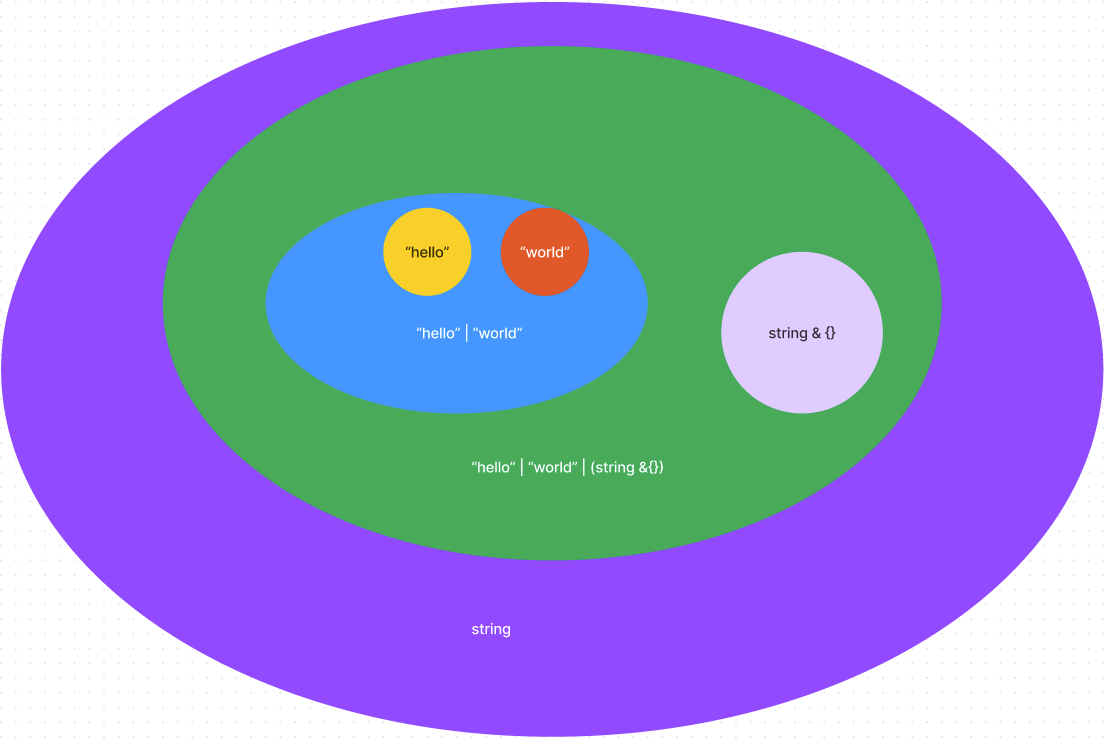
Tags
Annotators
URL
-
- Feb 2023
-
curtismchale.ca curtismchale.ca
-
When an idea feels like too much work to write down, you just told yourself it wasn’t valuable enough.
-
- Jan 2023
-
www.youtube.com www.youtube.com
-
https://www.youtube.com/watch?v=NPqjgN-pNDw
When did the switch in commonplace book framing did the idea of "second brain" hit? (This may be the first time I've seen it personally. Does it appear in other places?) Sift through r/commonplace books to see if there are mentions there.
By keeping one's commonplace in an analog form, it forces a greater level of intentionality because it's harder to excerpt material by hand. Doing this requires greater work than arbitrarily excerpting almost everything digitally. Manual provides a higher bar of value and edits out the lower value material.
-
-
learnyousomeerlang.com learnyousomeerlang.com
Tags
Annotators
URL
-
- Dec 2022
-
www.it.uu.se www.it.uu.se
Tags
Annotators
URL
-
-
erlang.org erlang.org
Tags
Annotators
URL
-
-
www.erlang.org www.erlang.org
-
-
www.erlang.org www.erlang.org
Tags
Annotators
URL
-
-
www.reddit.com www.reddit.com
-
Writing permanent notes was time consuming as f***. On one side writing them helped me grasp the concepts they described on a deep level. One the other side I think this would have been possible without putting an emphasis on referencing, atomicity, deep linking, etc.
The time it takes to make notes is an important investment. If it's not worth the time, what were you actually doing? Evergreen/permanent notes are only useful if you're going to use them later in some sort of output. Beyond this they may be useful for later search.
But if you're not going to search them or review them, which the writer says they didn't, then what was the point?
Have a reason for taking a note is of supreme importance. Otherwise, you're just collecting scraps...
People who have this problem shouldn't be using digital tools they should be spending even more time writing by hand. This will force them into being more parsimonious.
-
- Nov 2022
-
webidl.spec.whatwg.org webidl.spec.whatwg.org
Tags
Annotators
URL
-
-
stackoverflow.com stackoverflow.com
-
www.epicweb.dev www.epicweb.dev
Tags
Annotators
URL
-
- Oct 2022
-
www.youtube.com www.youtube.com
-
https://www.youtube.com/watch?v=Mvxbl7Iwep4
Lots of levels here to pull apart, but this should be particularly interesting to novices.
Modes of note taking: * note taking for raw information * note taking (or writing) for understanding * note taking for relationships of and between knowledge * note taking for creating proficiency * note taking for productivity
Sung takes the viewpoint that linear note taking isn't as effective as mind mapping and drawing out relationships; in part this is why handwriting is more effective means of note taking compared to typing, particularly as most note taking apps force one into a linear pathway that doesn't mirror the affordances available within handwriting.
This video is definitely more about note taking than note making.
-
-
Local file Local file
-
If he initially wrote hiscards by hand, the vast majority were typewritten with Hebrew words written in blankspaces when required.
While many of Deutsch's cards were initially written by hand, the majority of them are typewritten and included blank spaces for Hebrew words when required.
-
- Aug 2022
-
rmolinamir.github.io rmolinamir.github.io
Tags
Annotators
URL
-
- Jul 2022
-
www.reddit.com www.reddit.com
-
I bet with the advent of computers and the digitalizing of reference material there was a spike in the amount of verbatum quotes that are used instead of summarizing the thought into your own words.
It's a reasonable assumption that with the rise of digital contexts and the ease of cut and paste that people excerpting or quoting material are more likely to excerpt and quote longer passages because it is now easier to do.
Has anyone done research on showing that this is the case?
-
- Jun 2022
-
tc39.es tc39.es
-
- May 2022
-
Local file Local file
-
digital, we can supercharge these timelessbenefits with the incredible capabilities of technology—searching,sharing, backups, editing, linking, syncing between devices, andmany others
List of some affordance of digital note taking over handwriting: * search * sharing * backups (copies) * editing * linking (automatic?) * syncing to multiple spaces for ease of use
-
-
attacomsian.com attacomsian.com
-
let timer; // Timer identifier const waitTime = 500; // Wait time in milliseconds // Search function const search = (text) => { // TODO: Make HTTP Request HERE }; // Listen for `keyup` event const input = document.querySelector('#input-text'); input.addEventListener('keyup', (e) => { const text = e.currentTarget.value; // Clear timer clearTimeout(timer); // Wait for X ms and then process the request timer = setTimeout(() => { search(text); }, waitTime); });
let timer; // timer identifier const waitTime = 500; // Wait time in milliseconds
// search function const search = (text) => { // to do: make http request here }
// Listen for
keyupevent const input = document.querySelector('#input-text'); input.addEventListener('keyup', (e) => { const text = e.currentTarget.value; // clear timer clearTimeout(timer);// Wait for X ms and then process the request timer = setTimeout(() => { search(text); }, waitTime); });
-
-
-
// Get the input box let input = document.getElementById('my-input'); // Init a timeout variable to be used below let timeout = null; // Listen for keystroke events input.addEventListener('keyup', function (e) { // Clear the timeout if it has already been set. // This will prevent the previous task from executing // if it has been less than <MILLISECONDS> clearTimeout(timeout); // Make a new timeout set to go off in 1000ms (1 second) timeout = setTimeout(function () { console.log('Input Value:', textInput.value); }, 1000); });
let timeout = setTimeout(callback, milliseconds); clearTimeout(timeout);
document.getElementById("id-name"); object.addEventListener('event-name',callback);
-
In order to execute an event listener (or any function for that matter) after the user stops typing, we need to know about the two built-in JavaScript methods setTimeout(callback, milliseconds) and clearTimeout(timeout): setTimeout is a JavaScript method that executes a provided function after a specified amount of time (in milliseconds). clearTimeout is a related method that can be used to cancel a timeout that has been queued.
Step 1. Listen for User Input
<input type="text" id="my-input" />
let input = document.querySelector('#my-input'); input.addEventListener('keyup', function (e) { console.log('Value:', input.value); })
Step2: Debounce Event Handler Function
let input = document.getElementById('my-input'); let timeout = null;
input.addEventListener('keyup', function(e) { clearTimeout(timeout);
timeout = setTimeout(function() { console.llog('Input Value:', textInput.value); }, 1000); })
-
- Mar 2022
-
-
Research shows that people who are asked to write on complex topics,instead of being allowed to talk and gesture about them, end up reasoning lessastutely and drawing fewer inferences.
Should active reading, thinking, and annotating also include making gestures as a means of providing more clear reasoning, and drawing better inferences from one's material?
Would gestural movements with a hand or physical writing be helpful in annotation over digital annotation using typing as an input? Is this related to the anecdotal evidence/research of handwriting being a better method of note taking over typing?
Could products like Hypothes.is or Diigo benefit from the use of digital pens on screens as a means of improving learning over using a mouse and a keyboard to highlight and annotate?
-
- Feb 2022
-
Local file Local file
-
Different independent studies indicate that writing byhand facilitates understanding. In a small but fascinating study, twopsychologists tried to find out if it made a difference if students in alecture took notes by hand or by typing them into their laptops(Mueller and Oppenheimer 2014). They were not able to find anydifference in terms of the number of facts the students were able toremember. But in terms of understanding the content of the lecture,the students who took their notes by hand came out much, muchbetter. After a week, this difference in understanding was still clearlymeasurable.
Mueller and Oppenheimer 2014 indicate that students that took lecture notes (rather than typing them on a laptop) were able to understand the content of a lecture better and that this effect extended the span of a week. It did not show a difference in the number of facts they were able to remember.
-
- Jul 2021
-
journals.sagepub.com journals.sagepub.com
-
<small><cite class='h-cite via'>ᔥ <span class='p-author h-card'>Alfredo Carpineti</span> in Learning To Write By Hand Most Effectively Teaches Reading Skills | IFLScience (<time class='dt-published'>07/10/2021 01:56:58</time>)</cite></small>
-
-
www.iflscience.com www.iflscience.com
-
"The main lesson is that even though they were all good at recognizing letters, the writing training was the best at every other measure. And they required less time to get there," lead author Professor Robert Wiley, from the University of North Carolina, Greensboro, said in a statement. "With writing, you're getting a stronger representation in your mind that lets you scaffold toward these other types of tasks that don't in any way involve handwriting." Every participant in the study was an adult but the scientists are confident that the same for children. The key, they argue, is that handwriting reinforces what is being learned about the letter, such as the sound, beyond their shape. "The question out there for parents and educators is why should our kids spend any time doing handwriting," explained senior author professor Brenda Rapp, from Johns Hopkins University. "Obviously, you're going to be a better hand-writer if you practice it. But since people are handwriting less then maybe who cares? The real question is: Are there other benefits to handwriting that have to do with reading and spelling and understanding? We find there most definitely are."
Handwriting (as opposed to typing) has been shown to improve the speed at which one learns alphabets.
https://www.iflscience.com/brain/writing-by-hand-most-effectively-increases-reading-skills/
Is the effect also seen in other types of learning? What about reading and taking notes by hand versus typing them out?
-
- Jun 2021
-
graphql-ruby.org graphql-ruby.org
-
In mutations, when errors happen, the other fields may return nil. So, if those other fields have null: false, but they return nil, the GraphQL will panic and remove the whole mutation from the response, including the errors!
-
In order to have the rich error data, even when other fields are nil, those fields must have null: true so that the type system can be obeyed when errors happen.
-
-
www.postgresql.org www.postgresql.org
-
dlbink is a good example, since thestructure of the input query directly controls the stucture of thereturn type. The sever has no way to deal with that when the query isparsed and planned, so you have to help it out.
-
- May 2021
-
github.com github.com
-
Explicit types for function return values and arguments makes it clear to any calling code what is the module boundary's input and output.
-
- Mar 2021
-
github.com github.com
-
github.com github.com
-
result["result.policy.default"].success?
-
- Oct 2020
-
github.com github.com
-
Perhaps we should detect URLSearchParams objects differently (using duck typing detection instead of instanceof window.URLSearchParams, for example) but the solution isn't adding a specific polyfill to Axios (as it'd increase the bundle size and still won't work with other polyfills).
-
-
dmitripavlutin.com dmitripavlutin.com
-
To check whether a data type is iterable look at the method Symbol.iterator.
Tags
Annotators
URL
-
- Sep 2020
-
stackoverflow.com stackoverflow.com
-
the promise specification explicitly does not make a distinction
-
- May 2020
-
www.typescriptlang.org www.typescriptlang.org
-
All valid JavaScript code is also TypeScript code. You might get type-checking errors, but that won't stop you from running the resulting JavaScript.
Tags
Annotators
URL
-
- Feb 2020
-
reasonablypolymorphic.com reasonablypolymorphic.com
Tags
Annotators
URL
-
- Nov 2019
-
Tags
Annotators
URL
-
- Aug 2019
- Oct 2018
-
-
- Feb 2016
-
userinterfaces.aalto.fi userinterfaces.aalto.fi
-
A study of typing strategies among both touch-typists and self-taught typists.
http://10fastfingers.com/typing-test/english<br> Test your typing speed by typing a series of random words for one minute.
Tags
Annotators
URL
-
